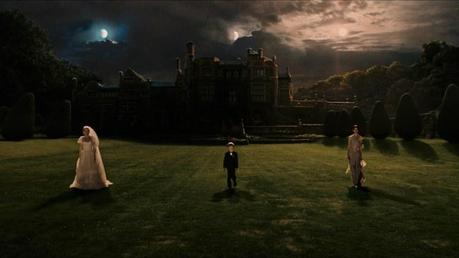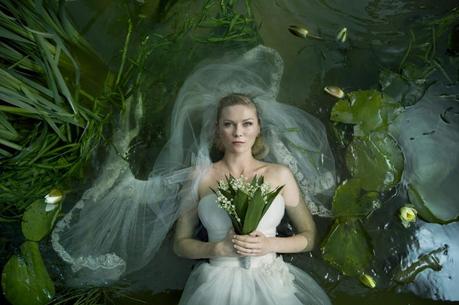As I’m sure you probably know, the indie darling movie of the month is the aptly titled Melancholia, from cinema’s bête noire, Lars von Trier. Editors Britta and Theo went to see the new movie tonight and were, on the whole, very impressed with von Trier’s latest offering.
The film is divided into two parts. The first, Justine, takes place at the reception for Justine (Kirsten Dunst) and Michael’s (Alexander Skarsgård) wedding, which was financed by Justine’s sister Claire (Charlotte Gainsbourg) and brother-in-law John (Kiefer Sutherland). Despite the happy occasion, Justine is suffering from severe clinical depression and cannot take part in her own life. The second act, Claire, focuses on the approach of a rogue planet, the eponymous Melancholia, and Claire’s fear that the planet will not miss earth, as John promises.

Kirsten Dunst as Justine and Charlotte Gainsbourg as Claire in Lars Von Trier's Melancholia
Theo:
Lars von Trier’s Melancholia is, above all, a visually stunning film. It is both beautiful and haunting, and oftentimes difficult to watch, though in a much different way than Antichrist. While the film’s metaphor is overly heavy handed (once again, especially when compared with Antichrist), it serves what I consider the point of the film well. Overall, Melancholia dispels the belief that depression is something that will pass by, leaving us unharmed. Gainsbourg and Dunst give stellar performances as sisters Claire and Justine, respectively. This is by far one of von Trier’s most easily accessible films, though it is as slow as any of his others.
It is obvious that comparisons between Melancholia and Antichrist will abound, both because of their thematic similarities and also, how can you not compare anything von Trier does from now on to Antichrist. One point of contention between Britta and I is that I feel Melancholia is part of a series with Antichrist; Melancholia is the yin to Antichrist’s yang. Both films tackle the issues of personal loss, and the end of the world on a intimate scale. Antichrist deals with these issues through anger and violence, while Melancholia refuses to participate with passive depression and indifference. In the end of both films, the world ends, signifying the futility of both states of mind.
Britta:
While it’s tempting to compare Melancholia to von Trier’s previous powerhouse Antichrist, it’s not an entirely fair comparison (although we will), and the movie owes more, emotionally, to von Trier’s breakout film Breaking the Waves (1996). Thematically, the film also deals with depression and anxiety, but the intimate, familial setting recalls the soft sadness and desperation of the Emily Watson-led drama. Charlotte Gainsbourg returns sans-scissors to once again steal the show with her gripping black eyed stare. Her Claire, the epitome of anxiety, is the ideal visual and metaphoric mirror of Kirsten Dunst’s curvy, blonde-haired , depression-bound Justine.
The film does suffer from too much of this dichotomy (although, as already mentioned, the dichotomy in Antichrist is a false one, and it may prove likewise upon repeated viewings of Melancholia). Additionally, the old sci-fi trope of the “hidden planet” (popular today, with films such as Another Earth), is little more than a pseudo-science excuse to get at the issues of mental illness.
Melancholia is burdened with the memory of Antichrist, for me. It’s difficult to watch it and not miss the sight of what felt like a director at the height of his game. Still, Melancholia may not be a powerhouse, but it is a palate cleanser.


